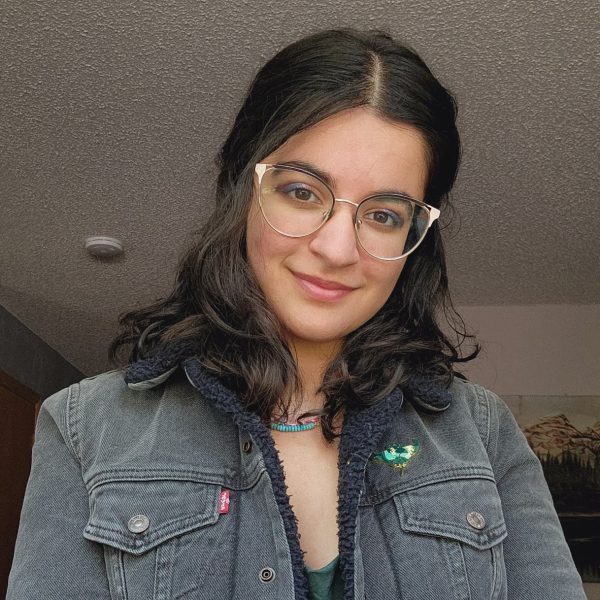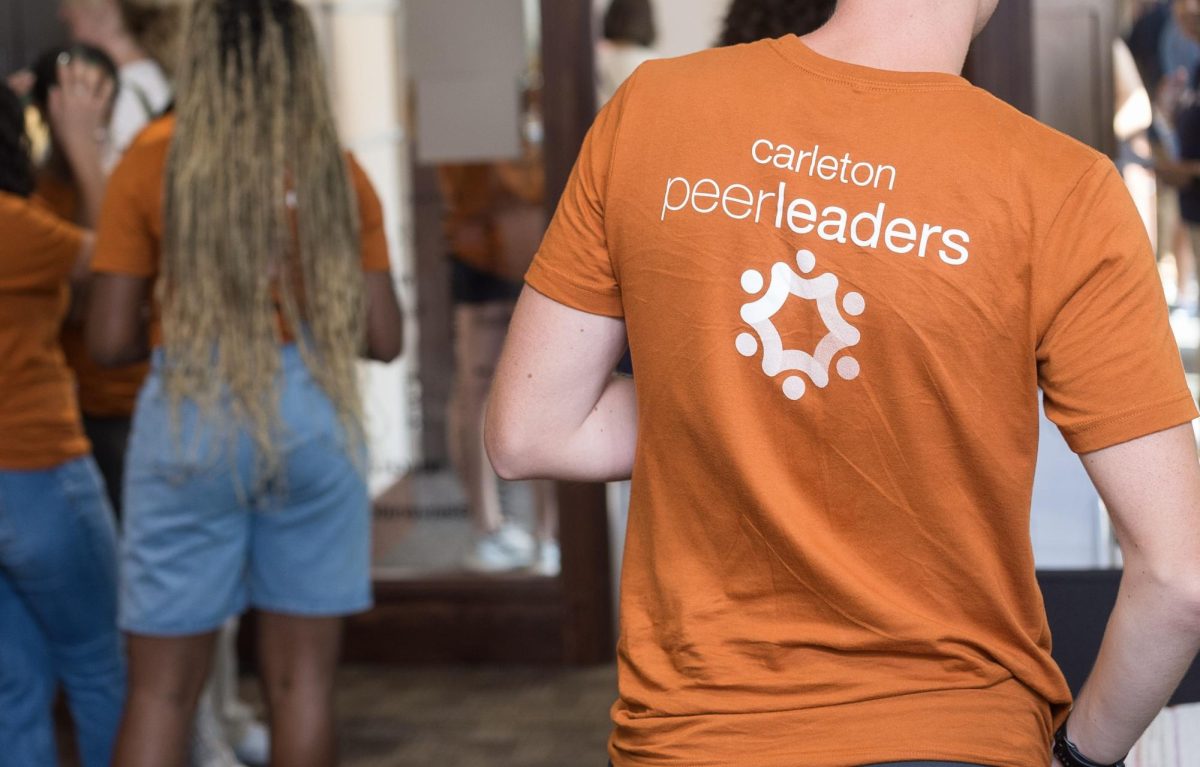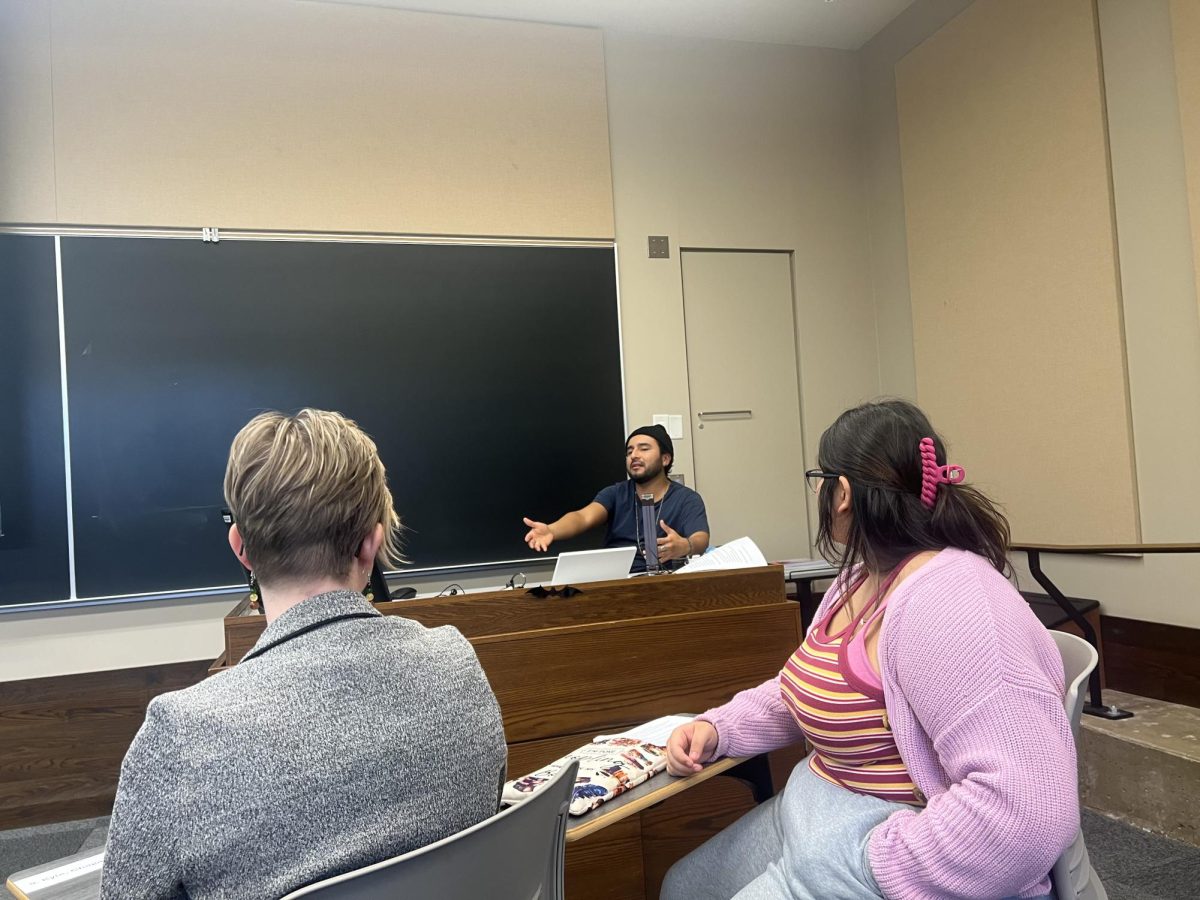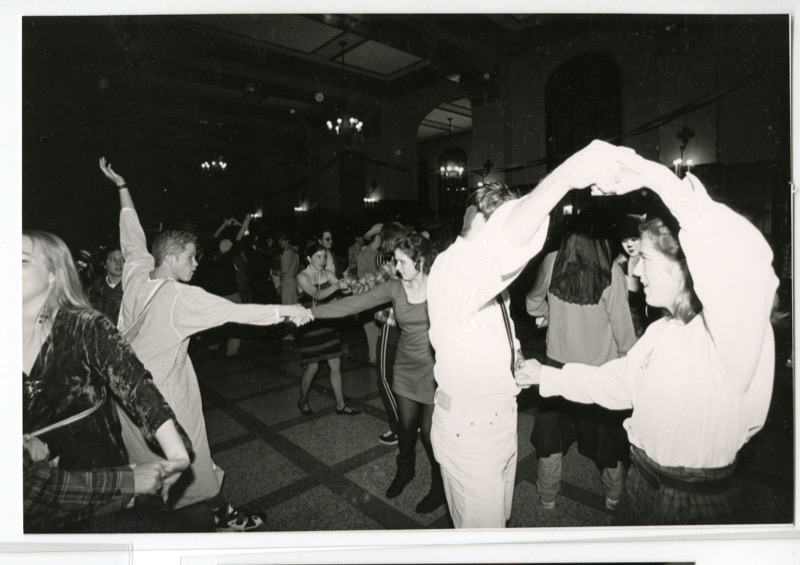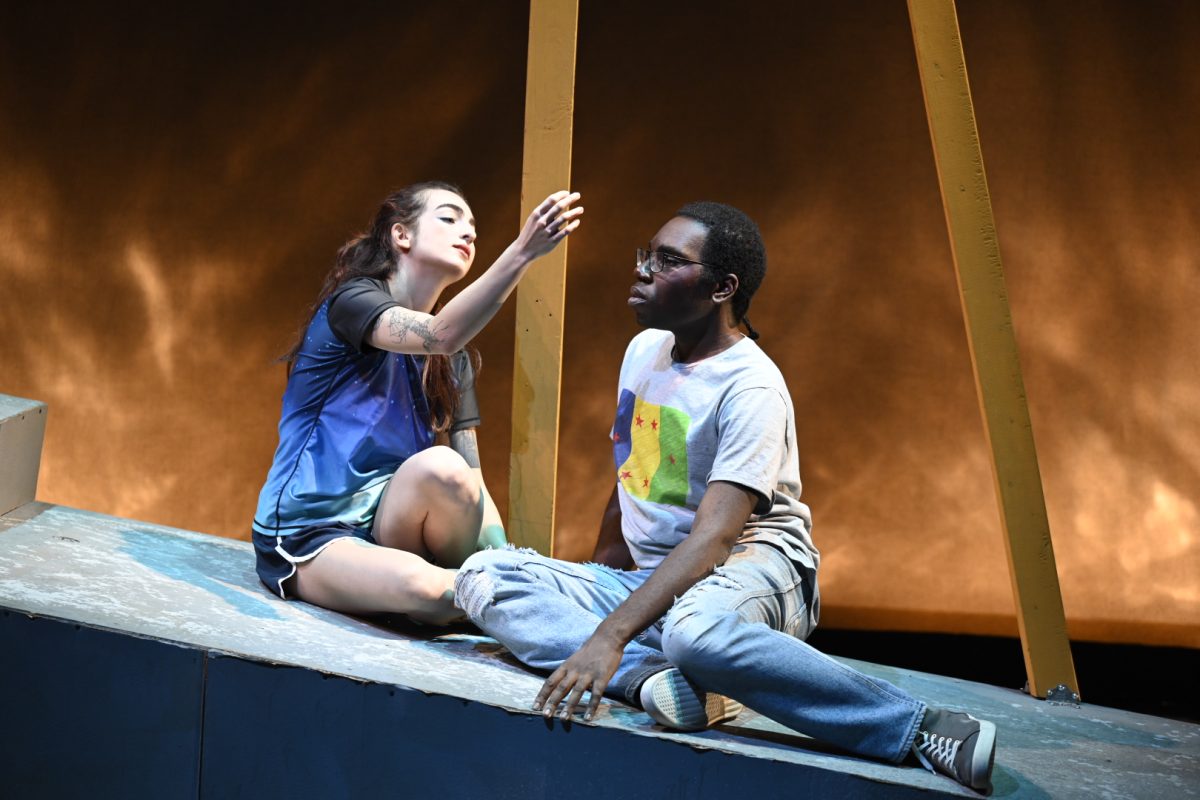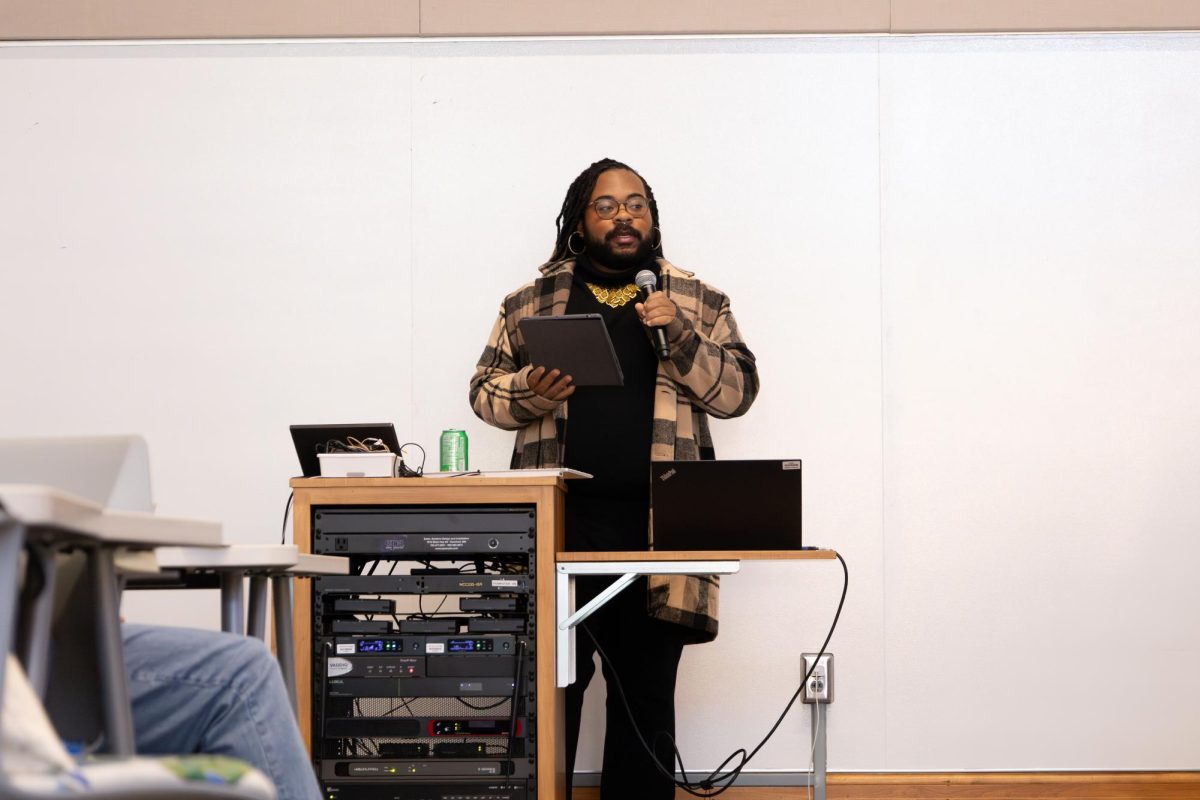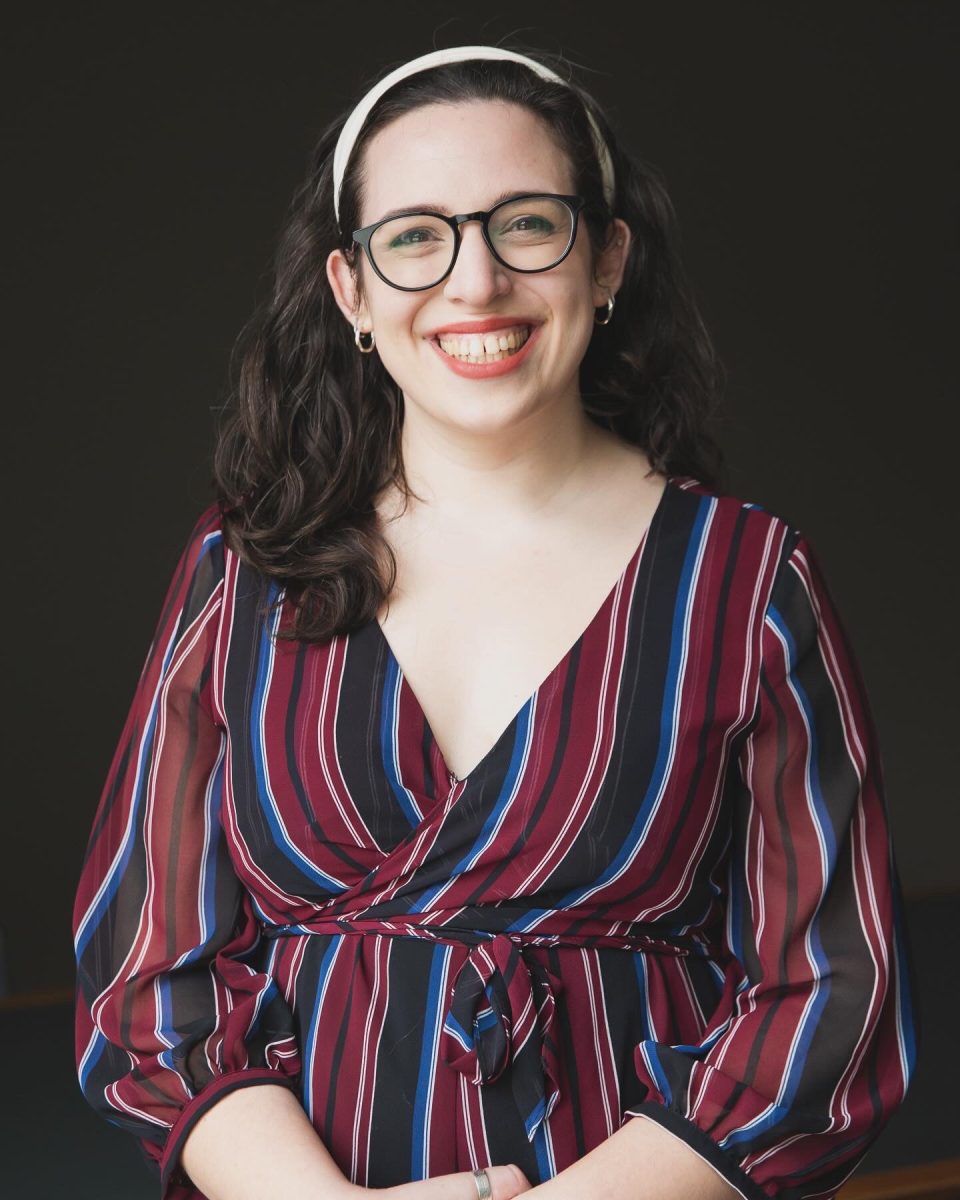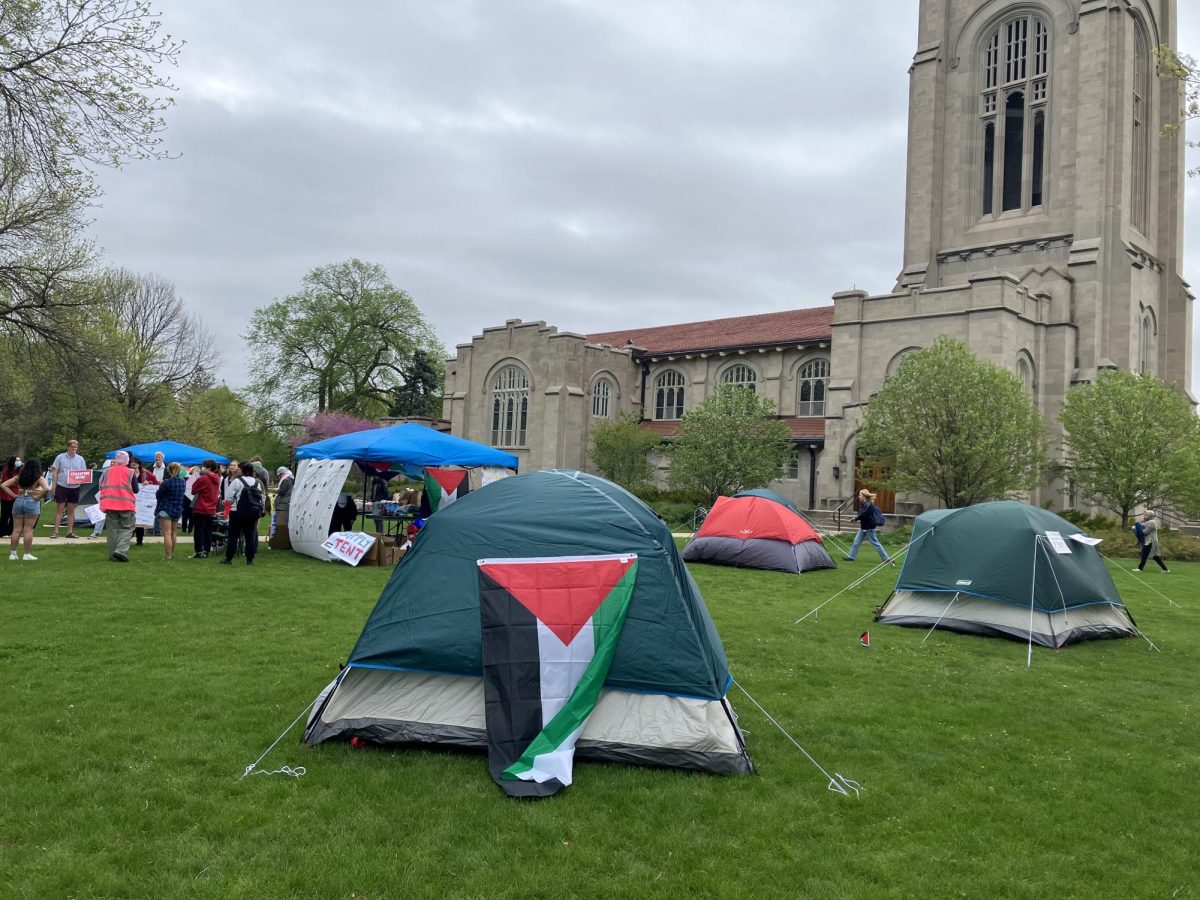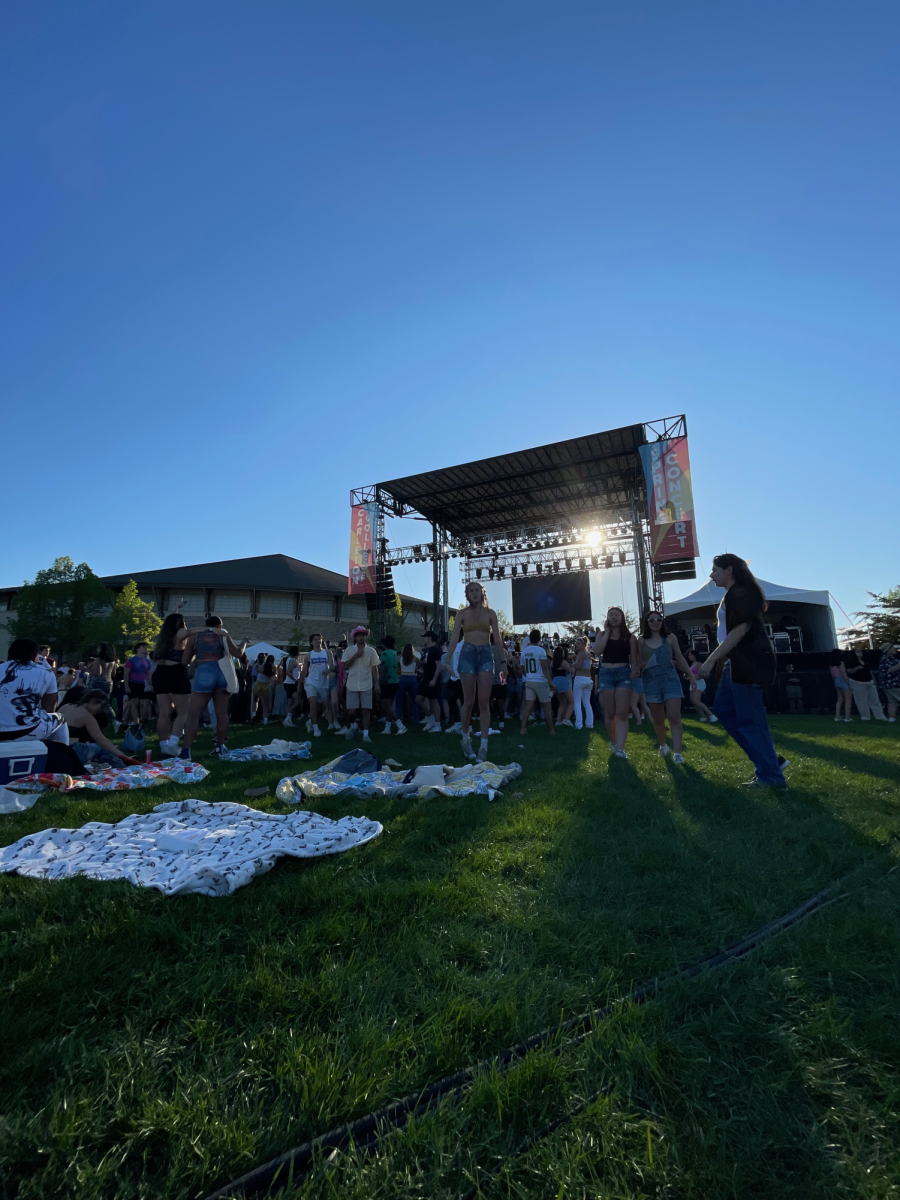The Theater and Dance Department’s Fall Term production, “Anon(ymous)”, ran from Oct. 24 to Oct. 27. The play, written by playwright Naomi Iizuka in 2006, was directed by Jeanne Willcoxon, a visiting assistant theater professor.
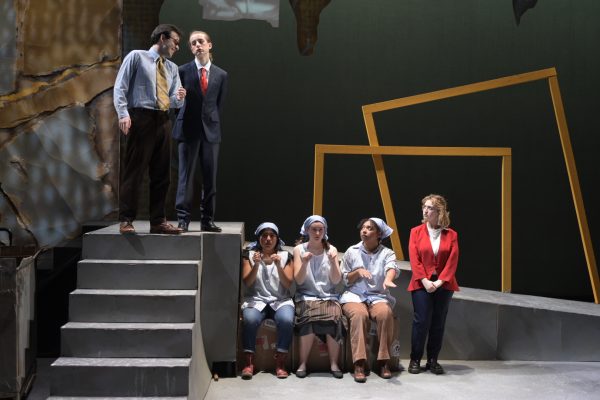
Audience member Lizzy Johnstone ’27 said it “was unique and refreshing! Its message about identity is so relevant, especially in this time. I really enjoyed seeing friends act in the play, and I especially loved the set design and lighting!”
Willcoxon picked this script with the intention of bringing light to the immigrant and refugee experience and combating harmful narratives that have been present in recent mainstream media. “It’s a particularly relevant and pressing issue,” Willcoxon said. “That became even more clear as we started the rehearsal process, … that kind of venomous rhetoric directed at immigrants and refugees. This play is a very forceful denunciation of that rhetorical and physical violence.”
“Immigration is being demonized,” Campbell Pflaum ’27 said. “The ethics of that is pretty jarring. Understanding that everyone who comes to this country comes because they want to participate in this country. That is an amazing, sacred thing. People should be treated with respect and dignity… rather than being political punching bags.”
“I think it’s so important to see your own experience represented on stage. It kinda says, ‘yeah, you exist. You have value. Your story should be told.’… In that respect, it’s a really important play because it’s putting that out there and saying, ‘Look. See. Witness. Understand,’” Willcoxon said.
Pflaum played the role of Helen Laius, the wife of a senator. She said that, in addition to specific characters, each cast member was part of the chorus as well.
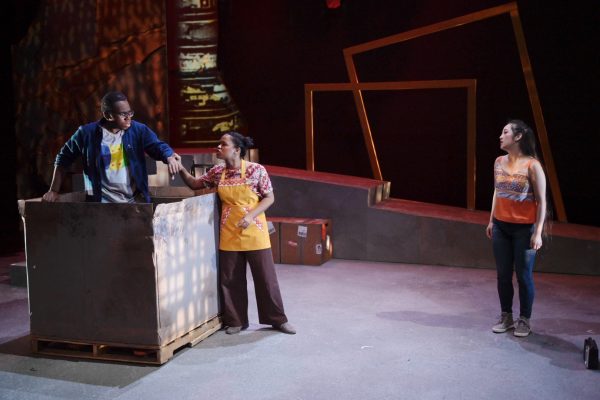
Helen Laius “was based on Helen of Troy from the Iliad,” Pflaum said, but that contextually this was after the Iliad when she and Menelaus were hosting Odysseus.
“The Odyssey parallels are interesting because that’s the origin of the [play’s] story,” said Pflaum. “It was helpful for us dramaturgically, but we were also thinking about our own society and American culture — especially parts of white American culture for my own character — that aren’t that welcoming despite how they present themselves.”
“There was almost an element of tongue-in-cheek to the whole thing,” Pflaum said on how white characters were represented. “It was definitely supposed to reflect appropriation, the element of white culture that appropriates other cultures at the same time that it rejects people from those cultures.”
Pflaum explored this idea within her character, saying that “in as much as [Helen is] racist, she also genuinely believes she’s trying to be a good person and cares about my friend Kaelyn Rothe’s ’26 character, Nemasani.”
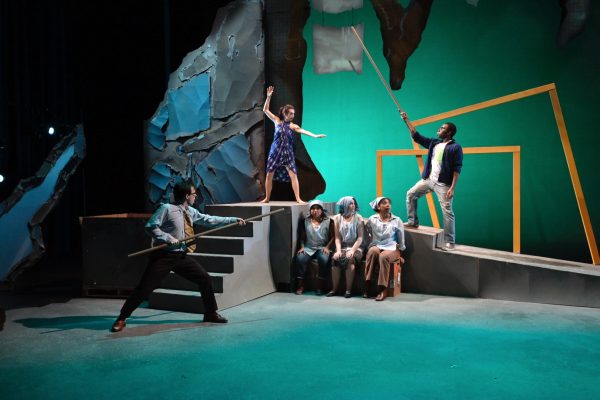
Within the context of “Anon(ymous)” and the Odyssey, Rothe’s character parallels that of Penelope on Odysseus’ home island of Ithaca. Willcoxon noted that in the classical story, she is Odysseus’s wife but in “Anon(ymous),” she is Anon’s mother.
Rather than Ithaca being home, “here, the place is his mother,” said Willcoxon.
Pflaum noted “It’s really interesting because Nemasani’s actual name never gets mentioned” in the performance play. The character is listed as Nemasani in the script and in the program, but in performance, she is referred to as “Penny” by other characters because they find pronouncing her true name too difficult. “It is definitely an intentional choice by [Iizuka] to point out the way we treat people, especially women immigrants, as nameless women.”
The play depicts a number of more gruesome, jarring scenes, covering topics such as human trafficking, a cannibalistic butcher and workplace sexual harassment. On Oct. 25, audience members cringed and reacted audibly to these scenes: some laughed, some gasped and some swore.
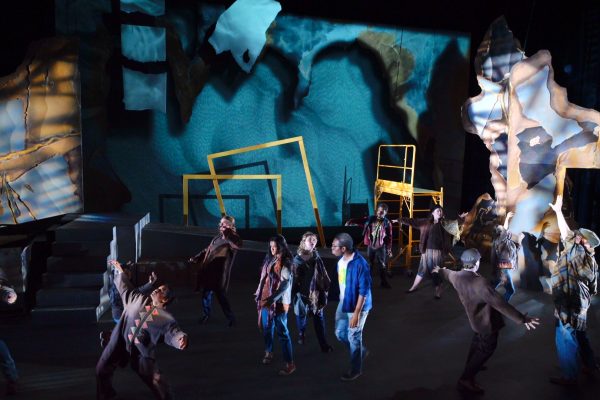
“That’s a difficult thing to see, but I think what theater does, … force us to see it but in a way that allows us to use our emotional intelligence in a way that simply reading about it in a newspaper does not,” Willcoxon said. “In plays, some horrible stuff is represented, but it’s for a reason.”
Willcoxon discussed this capacity for emotional resonance as an important reason for discussing graphic topics in theater, also highlighting how this unique ability of theater shows why arts and humanities are so important.
“I think there’s something very important about that visceral, emotional engagement because it is a way of knowledge that is as valid as other ways of knowledge,” Willcoxon said. “To eliminate that is a mistake.”
For the actors and director, rehearsal for the production entailed many long hours for the first five weeks of the term. A lot of that time was devoted to dance rehearsals and choreographing fight scenes with Daphne McCoy, a dance lecturer.
In the beginning, many discussions were had among the cast members “about how to be as sensitive with the material as possible,” according to Pflaum. The play dealt with heavy topics like immigration, depicted violence and cruelty.
Beyond actor preparation, other crucial elements of the play were being put together as well.
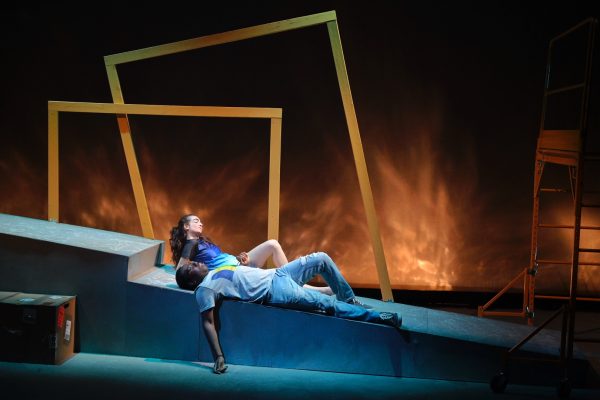
“We had a lot of tech in this show, and that was a lot of work in and of itself,” Willcoxon said. “Everyone working on it pulled together and worked so hard… as a cast, and everyone who worked as a dramaturg, in the costume shop, in the scene shop… There were over 70 people who worked on this show.”
Nora Underwood ’27 worked as a costume designer. She said that “there was a lot of intention put in from Mary Ann, the costume designer, to ensure that clothes were distressed in a way that matched the somber, anxious mood of the play which came across beautifully within the lighting and actors’ performances.”
Owen Roth ’25 individually composed the entirety of the music and sound design for the show. Willcoxon emphasized the importance of that work in creating the world the play represented.
Willcoxon described the play as being cinematic, with switching locations and transitions. She wanted to “realize that in a way that made sense” for the script and production while honoring Iizuka’s intentions.
Preparation for some students and faculty began as early as last spring. Linnea Williams ’26, an English major and classics minor, served as a dramaturg for the show, researching and providing important contextual information to the actors, director, crew and audience.
“A lot of my role was contextualizing the themes of the show into our current world and the world in which it was set and written in,” she said. “The show is speaking in many different contexts, but also it’s a unique context because it’s a piece of art that can stand on its own.” Williams described her role as a “historical consultant” and “literary contextualizer.”
Williams’ research began before the show was even cast and entailed speaking with Willcoxon, reading original classic texts like the Odyssey, and reading immigration policies and political stances. At this weekend’s production, Williams’ work was displayed as posters outside of the Weitz Theater for the audience to read and understand these connections.
Her role helped to draw the connections between certain characters such as Anon (played by Barin Nwike ’25) and Odysseus, and Naja (played by Defne Arat ’27) and Athena.
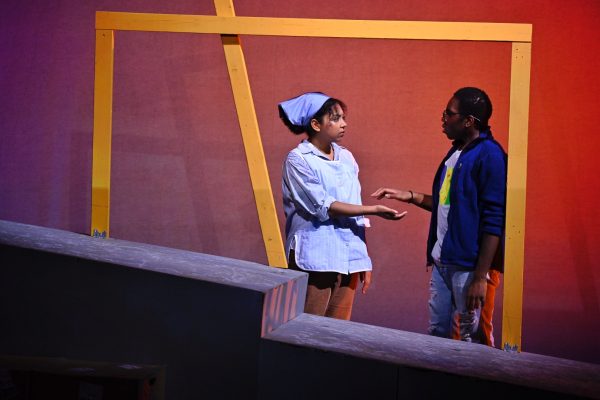
“As the play progresses, Anon, the main character, becomes that hero figure,” Willcoxon says, which sort of differs from the original Odyssey where Odysseus is a constant hero.
Williams said, “What I feel like could’ve been emphasized more is there’s a distinction between immigrant and refugee. I think the show might have been trying to communicate perspectives of both, but really of refugees.”
“I think that’s where the Odyssey comes in because, while Odysseus is trying to go home as opposed to trying to find a space away from home that still feels safe, he is grappling with what it means to leave your home that you love when you know it’s not a safe place for you to be,” said Williams. “I think that was something that was meant to be really prevalent in the show.”
“Neither place is necessarily safe, and I think that both [Anon(ymous) and the Odyssey] about trying to find a safe place in between, and what the experience going from one to another looks like. That’s where we can draw some significance from both.”
“For me what was so great about doing [dramaturgy] was it involves writing and research — I’m an English major; I do that all the time, and I really enjoy doing it. But I’m also a classics minor, so diving into classical texts is really important, and especially one of the texts which is considered foundational,” Williams said.
“In defense of the humanities, I would really love for people to realize how much weight classics has in our world.” She said, “it’s a field with a lot of issues, and those issues come to the front,” being limited in who its scholars are and represent… This show sort of allows for the ability to open up a little bit.”
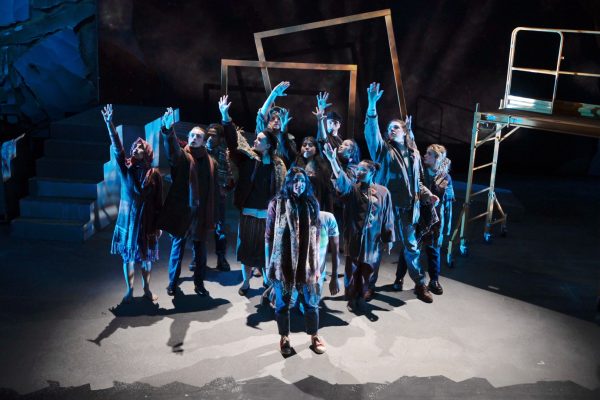
Williams said that many of the Odyssey parallels, however, would not necessarily be as obvious to an audience member especially without seeing the script or having prior knowledge of the Odyssey itself. What was more emphasized, and more important, she said, was the refugee and immigrant experience.
“Even if it’s an inch more into the world, it matters,” she said. “I think it’s our job as people who study [classics] to understand that this field needs to and s
hould be open to everybody. Nobody owns the past.”
